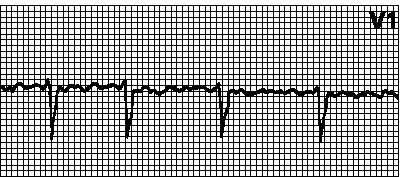|
Modelling > Pathologies and modelling modes > Pathologies and parametrical modes > Atrial fibrillation
|
Atrial fibrillation
Arrhythmic aetiology is not taken into account in our model, we consider only its influence on hemodynamics. The modelling is realized by making appropriate alterations in the formula of cardiac cycle duration (15).
Atrial fibrillation is a heart rhythm disorder. It usually involves a rapid heart rate, in which the upper heart chambers (atrium) are stimulated to contract in a very disorganized and abnormal manner. There is no generally accepted theory about development mechanism of atrial fibrillation.
|
||
|
There are two kinds of atrial fibrillation: paroxysmal and permanent. Permanent atrial fibrillation can be: high-speed (tachycardia), the heart rate may be 90 to 150—180 beats per minute, and low-speed (bradacardia), the heart rate may be no more than 60—80 beats per minute. In contrast to atrial fibrillation, during atrial flutter (arises under the same conditions as atrial fibrillation) the number of atrial impulses is no more than 300, the heart rate is more rapid — 240—300 beats per minute. There are two kinds of atrial flutter: regular (when every second, third and etc. impulse goes from atriums to ventricles) and irregular (when atrial and ventricular contractions are irregular) .
For modelling we have chosen irregular atrial fibrillation as a pathologic mode, characterized by randomness of cardiac cycle duration. In our model it is determined by this equation:
 |
(61) |
r – random value, evenly distributed on the segment [0, 1].
Modelling > Pathologies and modelling modes > Pathologies and parametrical modes > Atrial fibrillation
References on the topic:
© Samara-Dialog Ltd. 2004-2009 |
